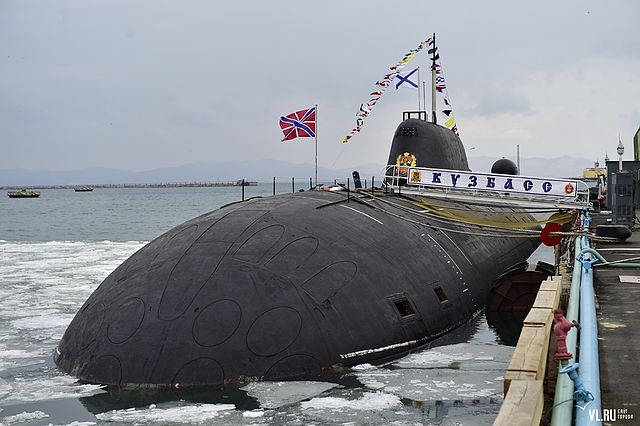A changing of the tides: The Ukraine war and material power

The Kuzbass, a Russian submarine, first launched in 1992
Ben Johnson -Even as headlines are dominated by the recent horrors of the Israel-Hamas War, another war begins to enter its second winter. The violence in Ukraine has continued to draw international condemnation but appears unlikely to stop. Despite their limited military capabilities, Ukrainians have proven resourceful and optimistic in their fight against Russia. One place this has become apparent is in Odesa, the port city housing Ukraine’s Naval base. Even without a maritime fleet, Ukrainian fighters have had significant successes in repelling Russia’s Navy in the Black Sea.
Ukraine’s successes against Russia, despite the disparity between their respective military capabilities, have brought up questions about the limitations of material power in current and future conflicts. Material power refers to the physical might of a country. For instance, this can take the form of military and industrial strength or refer to the size of one’s economy and population. With intelligence provided by Western allies, Ukraine has used its limited material power to an impressive extent. Naval leaders have used non-traditional strategies, such as units of soldiers on jet skis attacking Russian ships in sporadic nighttime raids. Of even more interest is Ukraine’s use of drone warfare. It takes resources and time to update and build ships, whereas drones can be quickly assembled and armed. This conflict illustrates how, despite Russia having a superior Navy or more material power, it can still be limited. The longstanding assumption that more weapons equal more power is consequently being challenged. This change is applicable to more than just Ukraine and Russia. Indeed, countries like the United States and China have been able to extend their power through their massive fleets. Ukraine’s successes in repelling Russia’s sea power bring to mind a simmering conflict with several distinct parallels to this one: China and Taiwan. Thus, we can see how this war will have lasting implications for future conflicts.
When examining a war such as this, it is important to consider the concept of boundaries. Boundaries, the dividing lines between territorial entities, can easily be made visible on land through posts, fences, and flags. However, it is much more challenging to demark these lines on water. Typically, countries are entitled to a stretch of territorial waters extending from their coastline. Russia has shown interest in controlling Ukraine’s ports and waters, first illustrated in its occupation of Crimea. While the full effects of this conflict remain to be seen, it has already begun to change how the world thinks about warfare.
Source: Источник — VL.ru, CC BY-SA 4.0

